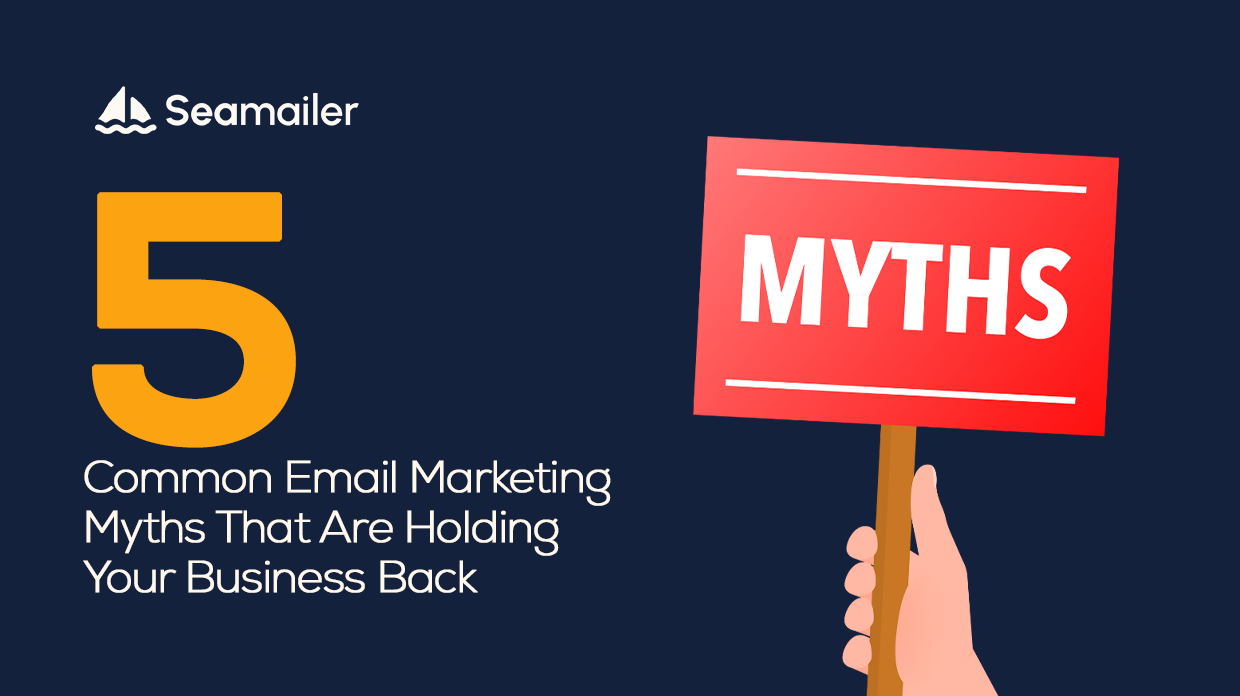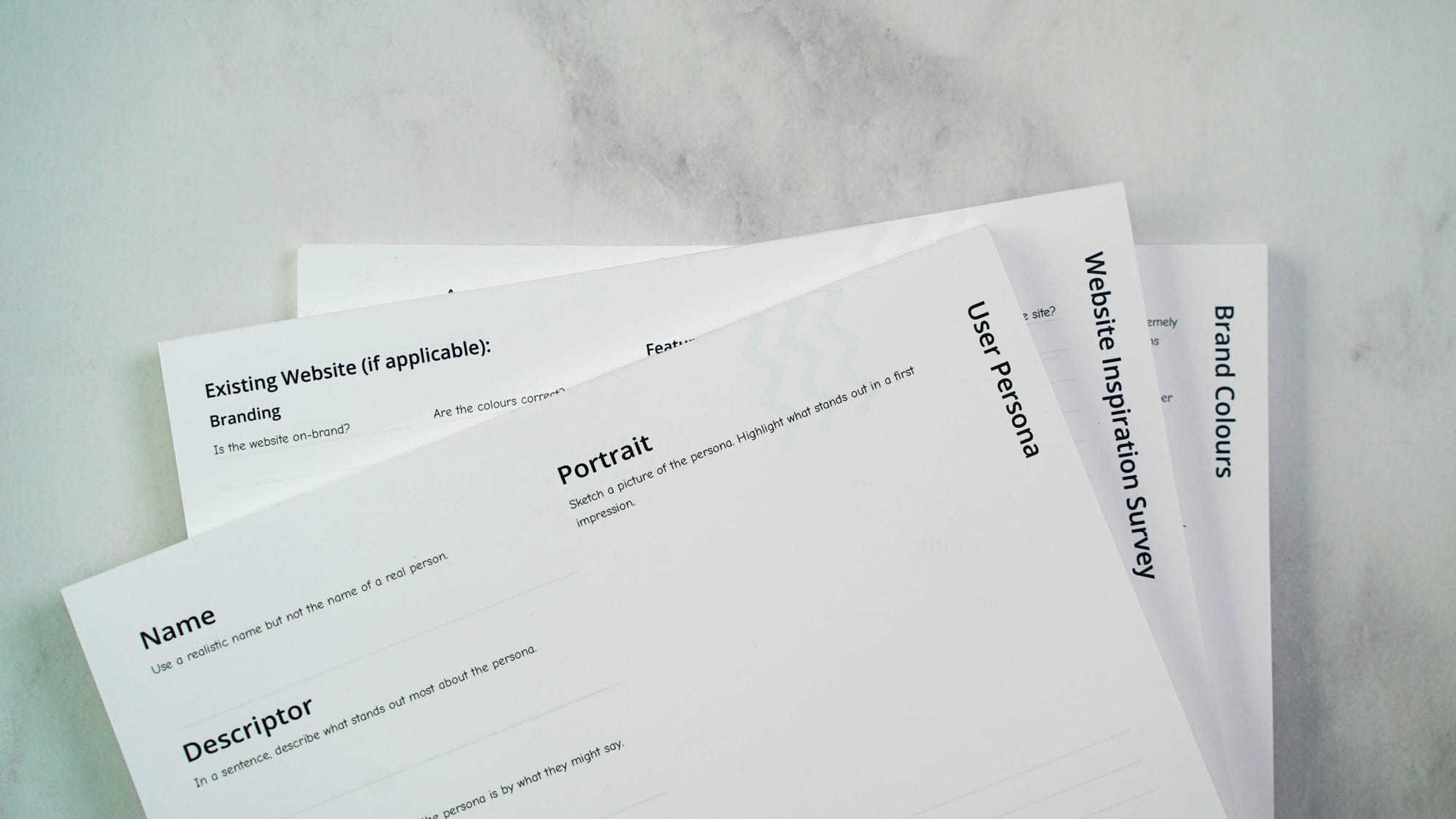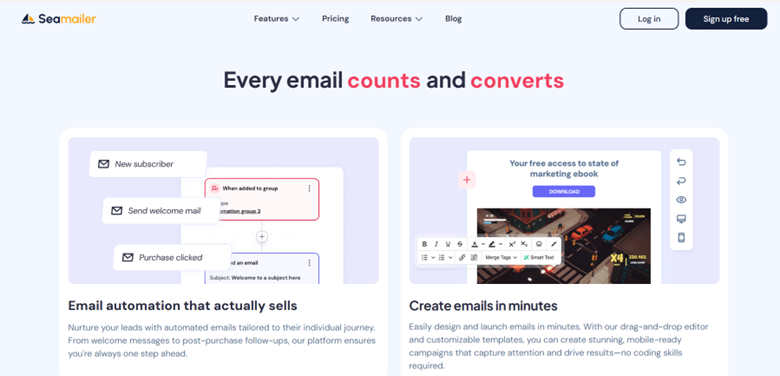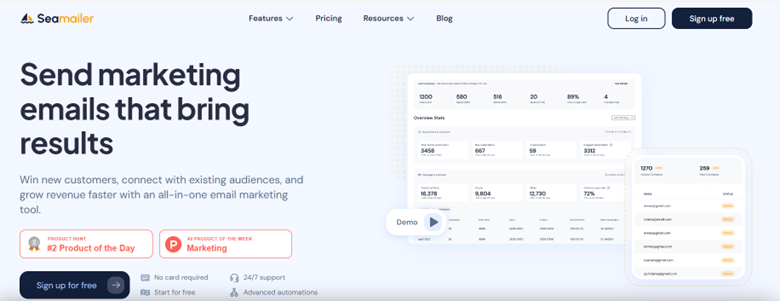5 Common Email Marketing Myths That Are Holding Your Business Back

Let me ask you something: how many times have you heard someone say, “email marketing is dead”? Or maybe you’ve been told it doesn’t work anymore because of social media, spam filters, or just sheer customer fatigue.
Here’s the truth: email marketing isn’t dead - far from it. In fact, email remains one of the most cost-effective and powerful tools for connecting with customers, nurturing leads, and generating real revenue. According to Statista, there were over 4.7 billion email users worldwide in 2025, and that number continues to grow. Meanwhile, a well-run email marketing campaign can generate an ROI of up to $36 for every $1 spent.
So why do so many businesses struggle with it?
It’s not because email doesn’t work. It is because they’re trapped by outdated beliefs - myths that prevent them from fully leveraging email’s potential.
Today, I’m going to break down 5 of the most common email marketing myths that could be quietly holding your business back. If you’ve ever felt stuck with your email campaigns, this might explain why - and by the end, you’ll know exactly how to set things straight.
Myth 1: Email Marketing Is Dead
This is arguably the biggest—and most damaging—myth in marketing today. With platforms like TikTok, Instagram, and LinkedIn dominating attention, many assume email has been pushed into the background by social media.
But let’s be real: when was the last time you signed up for a service, bought something online, or even scheduled a doctor’s appointment without using your email address? Exactly.
Email isn’t dead - it’s evolving. Unlike social platforms, where algorithms determine what your audience sees, email provides direct, one-on-one access to your subscribers. No middleman. No algorithm decides whether your content is “worthy” of reach.
A recent Litmus report showed that 78% of marketers saw an increase in email engagement over the past year, proving that people still want to hear from businesses through their inboxes.
What to do instead:
- Build and segment your list - focus on quality over quantity.
- Send value-driven emails that actually solve problems or entertain your subscribers.
- Use automation to stay consistent without overwhelming yourself.
Key takeaway: Email isn’t dead. If anything, it’s more alive than ever - it just requires a smarter, more personalized approach.

Myth 2: The More Emails You Send, the Better
I’ll admit, when I first started with email marketing, I thought volume was the secret. The logic was simple: if one email gets results, then sending five must get five times the results, right?
Wrong.
Bombarding your subscribers with constant emails is a fast track to burnout - and unsubscribes. People don’t want to feel spammed, and if they start associating your brand with annoyance, you’ve lost them.
The goal isn’t to send more emails, but to send the right emails at the right time. This is where segmentation and automation come into play. Instead of blasting everyone with the same content, you can create journeys based on customer behavior.
For example:
- A new subscriber might get a welcome sequence introducing your brand.
- A past customer might receive recommendations based on what they bought before.
- Someone who abandoned their cart might get a gentle reminder with an incentive.
Studies show that segmented campaigns can drive up to 760% more revenue than non-segmented ones.
What to do instead:
- Focus on relevance, not frequency.
- Test and analyze your engagement rates to find the sweet spot.
- Automate based on triggers (signups, purchases, abandoned carts, etc.).
Key takeaway: More emails don’t equal more results. Smarter, targeted emails do.

Myth 3: Unsubscribes Are a Bad Thing
If you’re like most business owners, you probably feel a little sting every time someone unsubscribes. I get it - it feels personal, like they’re rejecting your brand.
But here’s the thing: unsubscribes aren’t bad. In fact, they can be healthy for your list.
Think of it this way: would you rather have 10,000 subscribers who never open your emails, or 2,000 who are genuinely interested and engaged? The smaller, more engaged list will always outperform the bigger, disengaged one.
Cleaning your list regularly improves deliverability, engagement, and overall ROI. And let’s be honest: if someone unsubscribes, they probably weren’t going to buy from you anyway. That’s okay - you want to focus your energy on the people who do want to hear from you.
What to do instead:
- Don’t panic about unsubscribes - embrace them.
- Offer subscribers control (like adjusting frequency instead of outright unsubscribing).
- Regularly clean out inactive subscribers to keep your list healthy.
Key takeaway: Unsubscribes aren’t rejection - they’re refinement.

Myth 4: Email Marketing Is Just About Promotions
When people think “email marketing,” they often picture endless sales pitches: Buy now! Flash sale! Limited offer!
Yes, promotions are part of it - but if that’s all you’re doing, you’re missing the bigger picture.
Email is about building relationships. It’s your chance to provide value, educate, entertain, and connect with your audience on a deeper level. If every email you send is a sales pitch, subscribers will tune out.
Here are a few types of non-promotional emails that work wonders:
- Educational content: Share tips, how-tos, or insights relevant to your audience.
- Storytelling: Talk about your journey, your values, or customer success stories.
- Engagement emails: Polls, surveys, or “reply to this email” questions.
- Exclusive content: Behind-the-scenes updates or sneak peeks.
According to HubSpot, 86% of consumers want brands to be honest and transparent - email is the perfect channel to deliver that authenticity.
What to do instead:
- Mix up your content strategy (not every email needs to sell).
- Share stories, tips, and resources that make people look forward to opening your emails.
- Use promotions sparingly and strategically.
Key takeaway: Email isn’t just a sales channel - it’s a relationship channel.
Myth 5: Email Marketing Is Too Complicated
I hear this one a lot, especially from small business owners: “I don’t have the time or skills for email marketing.”
The truth? It’s never been easier.
Modern email marketing platforms (like Seamailer, Mailchimp, or ActiveCampaign) are built for simplicity. You don’t need to be a tech wizard or a copywriting genius to start seeing results.
Yes, there’s a learning curve - but once you set up a few automations (welcome sequences, abandoned cart flows, feedback requests), most of the heavy lifting is done for you. After that, it’s just about tweaking, testing, and improving.
And let’s not forget: the ROI is massive compared to the time investment. Even a small list of 500 subscribers can generate thousands in sales if nurtured properly.
What to do instead:
- Start small - set up one automation, like a welcome series.
- Use templates to save time (most tools have beautiful, ready-made options).
- Track your results and learn as you go.
Key takeaway: Email marketing isn’t complicated - it’s scalable. Start simple, and grow from there.

Conclusion
Here’s the bottom line: email marketing works. Always has, always will. But if you let outdated myths guide your strategy, you’ll never unlock its true potential.
To recap:
- Email isn’t dead - it’s thriving.
- More isn’t better - relevance wins.
- Unsubscribes aren’t bad - they’re healthy.
- Email isn’t just for selling - it’s for building relationships.
- It’s not too complicated - it’s easier than ever to get started.
If you shift your perspective and approach email marketing with clarity, you’ll see just how powerful it can be for your business.
So next time you hear someone say “email marketing doesn’t work anymore,” smile and know that you’re ahead of the curve. Because the truth is, email isn’t going anywhere - it’s just waiting for you to use it the right way.
Pro tip: If you’re ready to take your email marketing to the next level, try out Seamailer (or your preferred platform). Start with a simple welcome sequence and build from there - you’ll be amazed at the difference.

